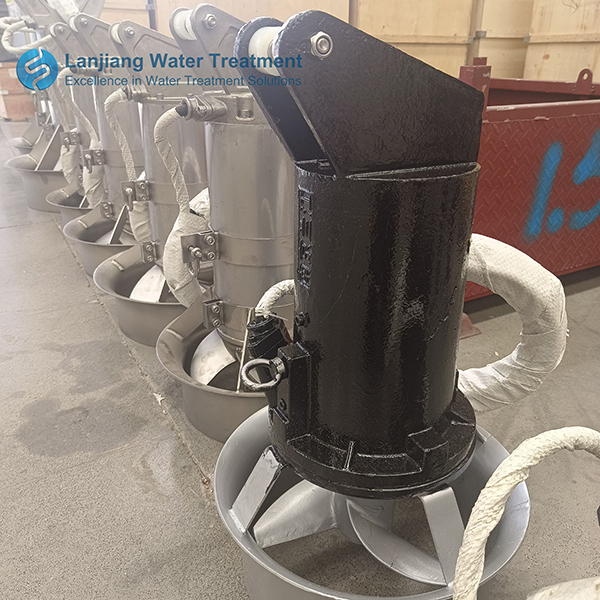During the commissioning of the sewage mixer, the following details need to be paid attention to to ensure the smooth commissioning and normal operation of the mixer:

First, safety precautions
Power off operation:
Before commissioning, be sure to cut off the power of the mixer to ensure that the equipment is in a state of power failure to prevent electric shock accidents.
Personal Protection:
Operators should wear personal protective equipment, such as safety helmets, protective glasses, gloves, etc., to protect their own safety.
Second, equipment inspection
Rotation direction check:
Start the mixer under no-load conditions, and first make a point adjustment to check whether the rotation direction of the mixer is correct. The wrong direction of rotation can cause the mixer to not work properly and even damage the equipment.
Appearance and connection check:
Check the appearance of the mixer is intact, no damage, deformation and other conditions. At the same time, check whether the connection between the components is firm and whether the fasteners are tightened to prevent the failure caused by loosening.
Electrical system inspection:
Check that the electrical system is properly wired and properly insulated. Ensure that the motor wiring is not short circuit, open circuit phenomenon, electrical components work normally.
Third, no-load test run
Idle check:
Start the mixer for trial operation under no-load condition, observe whether it runs smoothly, whether there is abnormal vibration, noise and other phenomena. The idling time should be long enough to fully check the operating status of the mixer.
Running parameter record:
Record the current, voltage, speed and other operating parameters during no-load test run for subsequent analysis and comparison.
Fourth, load test run
Step up speed:
When the water in the pool, use the inverter to start the mixer at a low speed, and then gradually increase the speed several times. There should be a period of time between each acceleration to observe the adaptation of the mixer to avoid sudden acceleration on the equipment.
Load parameter monitoring:
During the load test run, the current, voltage, speed and other parameters of the mixer are monitored in real time to ensure its operation within the rated range. If the parameters are found to be abnormally high or low, stop the machine immediately to check the cause.
Fifth, effect check and adjustment
Mixing effect observation:
Observe whether the mixing effect of the mixer meets the requirements, such as whether the sewage is evenly mixed and whether there is sediment accumulation.
Parameter adjustment:
According to the mixing effect and the running state of the equipment, the mixing time, mixing speed and other parameters of the mixer should be adjusted to achieve the best treatment effect.
Sixth, record and summary
Debug record:
Record all operations, observed phenomena, problems and solutions during debugging in detail. These records are important for subsequent equipment maintenance, troubleshooting, and performance optimization.
Summary and analysis:
The debugging process is summarized and analyzed to evaluate whether the performance of the mixer meets the design requirements and use requirements. If there are any shortcomings, put forward suggestions for improvement and take measures to improve them.
Through the attention and implementation of the above details, it can ensure the smooth commissioning process of the sewage mixer and the normal operation of the equipment. At the same time, it also provides strong support for subsequent equipment maintenance, troubleshooting, and performance optimization.
Nanjing LanJiang Water Treatment Equipment Co.,Ltd manufactures equipment for wastewater treatment. We were established in 2001. Since then, we designed and produced submersible mixers, top entry mixers, aerators and other wastewater treatment equipment.
Post time:2024-08-08